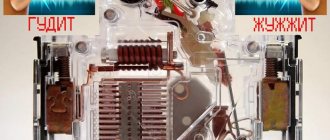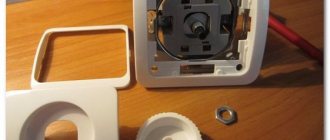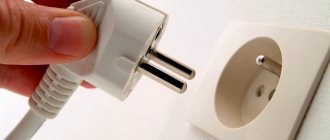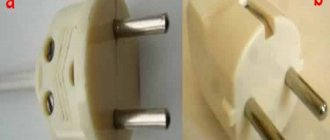Energy-saving lamps can be found in every apartment today. Many, in pursuit of savings, completely abandon simple incandescent lamps and install only energy-saving ones. However, not everyone knows what is inside these lamps and why they are dangerous. And inside them there is mercury, and in a gaseous state. When sealed, the lamp is safe for health and use. But as soon as you accidentally break it, all the mercury will end up in the air, inside your apartment.
General information
In modern society, energy-saving light bulbs have almost completely replaced conventional ones.
They are used everywhere - at home, in various industries, in offices. Without a doubt, energy-saving light bulbs have a number of advantages. But there is still one clear disadvantage - they break when dropped or hit. And this is very dangerous for the people around. Therefore, the question of what to do if an energy-saving light bulb breaks is very relevant for most users. Is this situation dangerous for others and what to do if an energy-saving lamp breaks, you can find out from this article.
How dangerous is this situation?
This situation cannot be called pleasant, but if a person breaks such a lamp, you should not panic or call specialists. True, this statement is relevant if this happened with one lamp. But if several of them crashed at once, this is already a serious reason to call for help. After all, inside such a device there is a mercury almagam , that is, mercury vapor. This substance is classified as hazard class 1. This substance is located inside the tube. Accordingly, it comes out when the tube breaks or its integrity is compromised.
Very often people confuse the mercury filling and the luminescent coating inside the glass tube. During operation, this coating may fall off inside the lamp. If this happens, there is no need to worry, because only after the integrity of the lamp is damaged, mercury evaporates from the lamp.
LL disposal
Why does the LED light blink when the lights are off?
Spent arc lamps and CFLs fall under the category of hazard class 1 waste. Special technologies are used for their processing. Broken lamps are first placed in sealed polyethylene bags or tightly closed glass jars and handed over along with used lamps to recycling plants.
To collect mercury-containing devices, there are collection points or eco-boxes are installed.
Lamps are sent for recycling in containers that are sealed. Demercurization is carried out mainly by hydrometallurgical and thermal methods. The figure below shows one of the installations for recycling mercury lamps.
Installation for processing mercury-containing lamps
Hydrometallurgical processing
Hydrometallurgical processing of mercury lamps includes the following stages:
- The lamps are crushed in a ball mill.
- Add a special liquid reagent and continue grinding.
- The liquid fraction is drained from the mill and sent to a mercury recovery plant, for example, by aluminum cementation.
Thermal demercurization
The technology consists of crushing lamps, heating cullet until mercury turns into a vapor state, condensing the vapors and purifying them.
Metal parts of lamps are divided into the following concentrates for non-ferrous metallurgy:
- aluminum (plinths);
- copper-nickel (terminals);
- copper-zinc (pins);
- solder;
- lead (legs).
Crushed glass is sent to landfill along with household waste or added as a filler to concrete if it does not contain mercury residues.
The methods listed above do not always ensure the purification of solid fractions to MPC standards. In addition, wastewater is generated, which always contains some mercury and other harmful components.
In more modern methods, lamps are recycled in special modules where there is no sewage, and the remaining mercury vapor is captured and processed in an absorption column. As a result, harmful emissions into the environment are eliminated, and solid waste does not contain toxic chemicals.
Why is mercury almagama dangerous?
Anyone who uses such lamps should understand what mercury is and why it is dangerous. Mercury is one of the elements in Mendeleev's periodic table. This metal is dangerous to health and life, as its fumes provoke poisoning. Its severity depends on how long and in what quantities a person inhaled such fumes.
When poisoned by mercury vapor, poisoning develops, in which a person experiences hand tremors, dysfunction of the nervous system, and gingivitis . Such manifestations are characteristic of chronic poisoning. In acute poisoning, when a person inhales high concentration vapors, weakness, abdominal pain, bleeding gums, and vomiting develop.
Symptoms of acute poisoning develop several hours after exposure to mercury. At first, a person feels weakness, headache, a metallic taste in the mouth and discomfort when swallowing. There is increased salivation, bleeding and swelling of the gums, nausea and vomiting. Then very severe pain in the abdomen develops, and severe diarrhea mixed with blood is tormented. The development of an inflammatory process in the lungs, severe chills, cough and shortness of breath . Body temperature may rise, sometimes reaching values close to 40°C. When conducting tests, a large amount of mercury is detected in the urine. In both adults and children, the symptoms of poisoning manifest themselves in the same way. However, in a baby, symptoms of poisoning develop faster, his clinical picture is more pronounced, so he needs to be helped as quickly as possible.
intoxication occurs , a person cannot lead a normal life. Mercury vapor is most dangerous for young children and expectant mothers. Provided that a pregnant woman is severely poisoned by mercury vapor, the likelihood of developing intrauterine pathologies in the fetus increases.
Severe poisoning ends in death within a few days. Consequently, acute poisoning is treated exclusively in a hospital setting. Therefore, it is important to know what will happen if such a lamp is broken, and how to act correctly in such a situation. Of course, if one light bulb breaks, it will not cause much harm to others. But it is still important to take all necessary precautions.
How much mercury is in an energy-saving lamp?
Depending on the characteristics of the energy-saving lamp, it may contain from 1 to 400 mg of mercury. If we compare it with a thermometer, then the amount of this metal in it is much greater - 2 g. A health threat is observed if the concentration of mercury vapor in the room is from 0.25 mg/cu.
Light bulbs that are produced in our country or in China contain mercury vapor, but devices from manufacturers from European countries contain mercury almagama (an alloy with another metal). It is less dangerous to health.
Considering the fact that in fact the danger of a broken energy-saving lamp is mostly exaggerated, you should not be scared or panic. However, everyone should be clearly aware that such light bulbs must be treated very carefully. This should be clearly explained to children.
The question of what is more dangerous is also quite relevant - if the thermometer breaks, or if the integrity of the lamp is lost. Despite the abundance of safe thermometers, mercury thermometers are still used in many families. It is a broken thermometer that is more dangerous, since small balls of mercury can roll into a variety of places and remain in crevices that are inaccessible for cleaning. If left indoors, mercury will poison the air for a long time. But if the integrity of an energy-saving lamp is damaged, there is no need to look for balls on the floor, since the mercury inside is only in the form of vapor. That is why the harm of energy-saving lamps in this case is less pronounced.
What happens if you break an energy-saving light bulb - All about electrics in the house
- The maximum permissible concentration (MAC) of mercury in the atmosphere should not exceed 0.0003 mg/m3.
- The bulb of a small energy-saving lamp may contain up to 7 mg of a harmful substance.
- For a normal room, the maximum permissible concentration can increase by 160-200 times if an incident occurs.
- The poison vapors are odorless, which makes the situation even worse (you won't hear anything if destruction occurs).
- Among the main symptoms of the lesion are: dizziness, weakness, lack of appetite. Mercury vapor negatively affects the liver, kidneys and nervous system. With large volumes of a harmful substance, the consequence can even be death.
Useful tips Connection diagrams Principles of operation of devices Main concepts Meters from Energomer Precautions Incandescent lamps Video instructions for the master Testing with a multimeter
What to do if a light bulb bursts or breaks?
If a fluorescent lamp breaks, what to do depends on the circumstances in which this happened.
If such an incident occurs, you need to act by adhering to the following sequence of rules:
- Take children and animals out of the room where this happened and immediately close the door.
- It is important to be careful not to cut yourself on the fragments.
- If a light bulb breaks directly in the lamp, you should immediately disconnect it from the power supply.
- Open a window in the room, while closing all windows and doors in other rooms to avoid drafts. This is the most important step to clear the air of harmful mercury vapor as quickly as possible. Ventilation should continue for as long as possible, at least two hours. But ideally, the room should be ventilated throughout the day.
- You need to pour cold water into a large jar and add potassium permanganate there.
- Wear plastic or rubber gloves on your hands; if you don’t have these, use plastic bags. Under no circumstances should you pick up the fragments with your bare hands.
- Collect all the pieces of the light bulb, including the base, in a jar of liquid.
- Small particles of glass and luminescent coating should be collected using a wet rag, napkin or cotton wool, carefully and thoroughly blotting the surface where the device crashed. A cotton wool or napkin should also be placed in the water in a jar. You can also use tape to pick up small pieces.
- After completing all the work, close the jar with a lid and place it in a dark room where there are no people. Then you need to contact the Ministry of Emergency Situations, where they will tell you where you can take this waste.
- After this, you should look very carefully to see if there are any small pieces left under the furniture in the cracks and other places.
- The floor should be thoroughly washed with water and a detergent containing chlorine or water with soap and soda. You can also use a solution of potassium permanganate or iodine solution - 100 ml of iodine per 1 liter of water. Wet cleaning using these products should be carried out for several days in a row.
- After this, take a shower.
- Shoes and clothes that the person was wearing during cleaning do not need to be disposed of. All this must be washed thoroughly in a basin separately from other clothes.
Is it dangerous if a lamp breaks on a carpeted floor?
If everything happened exactly like this, then the main danger is the likely presence of small particles of glass in the carpet pile. As already indicated, all the pieces need to be assembled very carefully. Next, you should roll up the carpet and take it to a place where there is no one - in a vacant lot or in a field. It needs to be knocked out or shaken out very carefully. If possible, it is advisable to leave the carpet to air out in the open air for 24 hours.
Hazard Control Measures
To minimize the consequences of the spread of mercury after a broken energy-saving light bulb, a number of measures must be taken:
- The process of collecting fragmented parts from the lamp, ventilation, etc. should be carried out by one person, everyone else should leave the room, taking their pets with them.
- To prevent fumes from spreading throughout the living area, the door to the room is tightly closed, and the cracks are plugged with rags.
- Open the windows in the room.
- Start collecting shrapnel parts, using protective equipment (rubber gloves). Small parts are removed with a sponge, which is thrown away along with the fragments. The vacuum cleaner is not used for cleaning, as mercury vapor will remain on the filters.
- Shards, washcloths, rags, cardboard, newspapers are all thrown away in a tight bag.
- All surfaces are wiped with a damp cloth, which is also immediately disposed of. If the fragments were on soft surfaces (blankets, pillows), then they must be examined to determine whether they contain hazardous substances.
- If dangerous particles get on the carpet, it should be taken outside and knocked out. An old sheet or oilcloth is spread under it, which will serve as a collection of elements. It will also have to be disposed of along with the collected parts.
- All items collected in the package must be disposed of in a special container.
- After complete removal of particles, demercurization is carried out. This is the treatment of all surfaces with a special solution, which can reduce the concentration of vapors. It is permissible to prepare the solution yourself. Preparation in three ways is possible: 2 grams of manganese are dissolved in a liter of water; for 10 liters add 400 grams of soda and part of liquid soap; Dissolve 100 ml of iodine in a liter of water.
- This procedure takes 3–4 days.
- In order not to carry out cleaning activities themselves, special services are invited to carry out treatment with special solutions and measure the level of concentration of mercury vapor.
What should you not do?
There are a number of prohibitions that also need to be taken into account. So, you can't do the following:
- collect the light bulb particles with a vacuum cleaner, otherwise the mercury will end up inside and settle there;
- turn on the air conditioner, as mercury vapor will settle inside it;
- use a broom or broom, as too strong movements will cause particles to scatter throughout the room;
- throw glass particles or a jar of waste into the garbage chute or take it to the trash;
- pour liquid from a jar containing the remains of a broken lamp down the drain.
Used whole light bulbs should not be thrown into the trash. They are handed over to collection points. Information on where to donate energy-saving lamps can sometimes be found in stores specializing in the sale of such devices. Sometimes used lamps can be handed over to points in these stores. If this is not possible, you can find out where to donate energy-saving light bulbs and where to dispose of leftovers if the lamp breaks by calling emergency rescue organizations.
Demercurization
Now it is necessary to neutralize the effects of mercury in the place where the lamp was broken - this process is scientifically called demercurization.
To do this, it is necessary to make a disinfectant composition from the means available at hand in the household. You can use what you have in your home: potassium permanganate, ordinary baking soda, whiteness and iodine. Option 1 - Dilute 2 grams of potassium permanganate in a liter jar of water. Moisten the area where the broken lamp hit with the resulting solution. After 7 hours, wash off the solution with soapy water. Option 2 - Add 40 grams of soda to 1 liter of water and mix with soap solution. Treat the surface with this composition. Option 3 - If the surface area is large, use bleach. Take a liter of “Whiteness” and stir it in 5 liters of water. Treat the infected area with this liquid. Option 4 - If the surface area on which the lamp broke is small, you can use iodine. In a liter jar of water, dilute 100 ml of iodine and moisten the surface with this composition.
It is better not to flush used solutions down the toilet, and also dispose of them along with the lamp. By wetting the damaged area of the lamp with the solution, you thereby neutralize the volatile properties of mercury. This treatment needs to be done over several days. Be sure to use protective rubber gloves when cleaning.
If you have broken not one, but several lamps at the same time, for example, packaging due to careless handling or a fall from a height, then you need to contact specialists and do not hesitate to call the Ministry of Emergency Situations. As discussed above, broken and unusable energy-saving lamps should not be thrown into ordinary household trash bins.
In large cities today, there are already enough special containers for the disposal of such waste. What to do if there is no such container near where you live? In this case, it may be advisable to seek help from some large, nearby enterprise. Typically, environmental supervision obliges such offices to enter into contracts for the disposal of mercury-containing lamps and to have specialized containers on their territory. Ask them for the opportunity to use this container.
conclusions
Even considering how much an energy-saving light bulb costs, these devices are very economical and convenient. But both the remains of broken and used devices must be disposed of correctly so as not to cause damage to the environment. If trouble occurs, you should not panic, but act according to the rules, which describe in detail what to do if a fluorescent lamp breaks.
According to statistics, approximately 70 million of these lamps fail every year. And only about 40% is recycled taking into account all the rules of this process. All the rest end up in household waste and poison the environment. Therefore, disposal issues must be treated very responsibly.
Differences between an arc lamp and a CFL
Why does the energy-saving light bulb blink?
The term arc lamp includes a whole class of lamps. At the dawn of electricity, it became the first lamp, which was quickly replaced by the incandescent lamp. The idea of placing an arc in an inert environment was realized when an arc lamp was created filled inside with metal vapors, most often with mercury or its compounds. It does not produce the same quality light as CFLs, but can be used for industrial lighting.
CFLs are used where uniform illumination, high color rendering and brightness are required. They are used in rooms with a large number of people, where strict compliance with sanitary standards is necessary. A CFL is not as harmful as an arc lamp because it uses mercury compounds to prevent it from spreading inside buildings if the bulb breaks.
Regardless of the type of lamps, there is always the problem of their disposal. Unfortunately, many people do not understand this and throw away lamps anywhere. The figure below shows how CFLs are collected in special containers.
Collecting compact fluorescent lamps in containers











